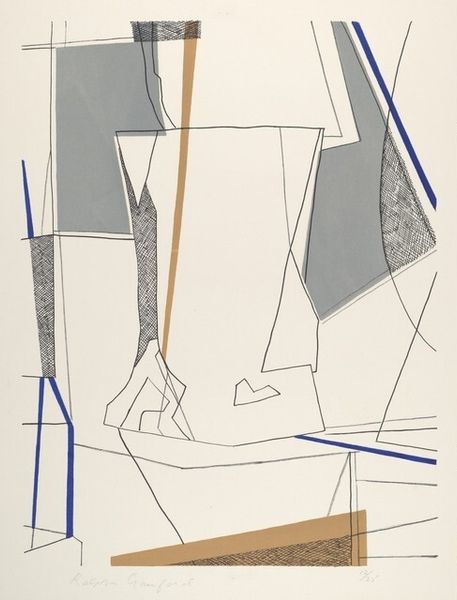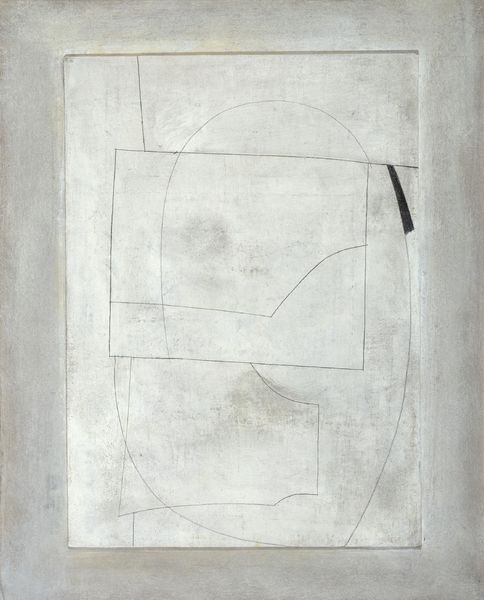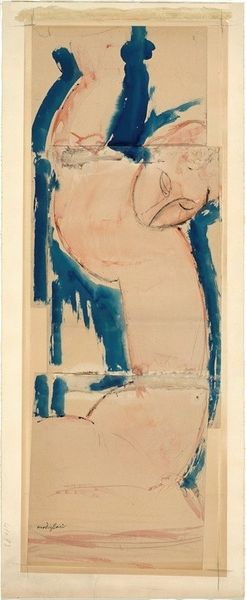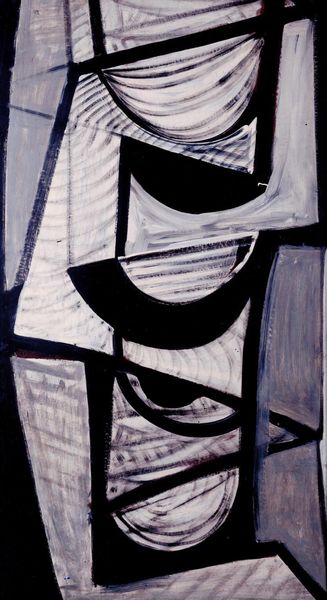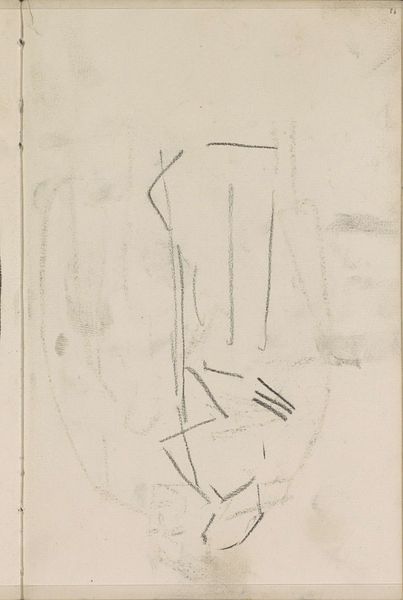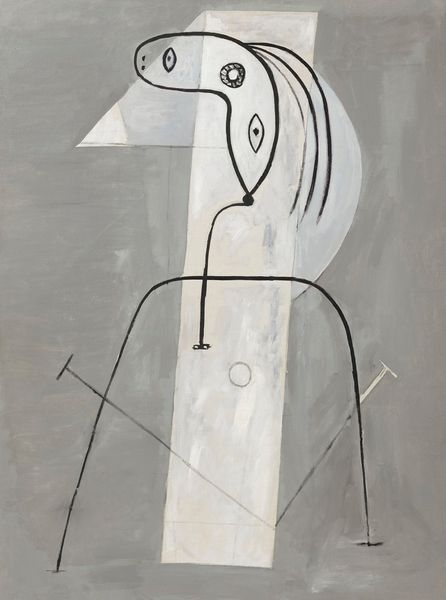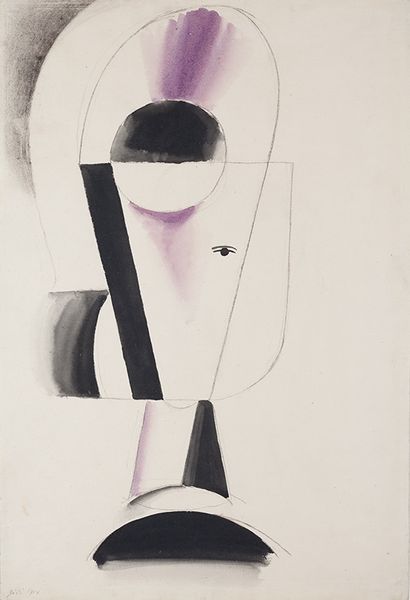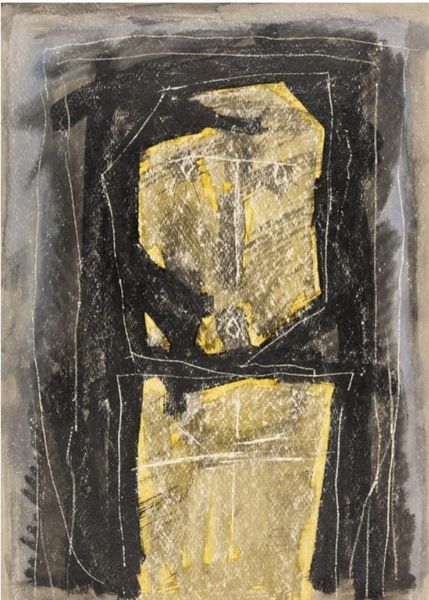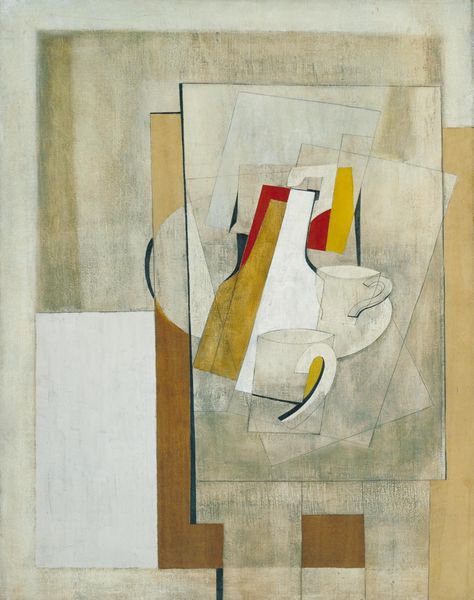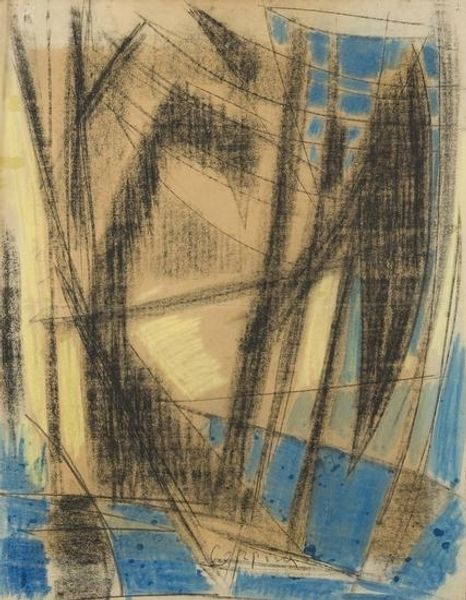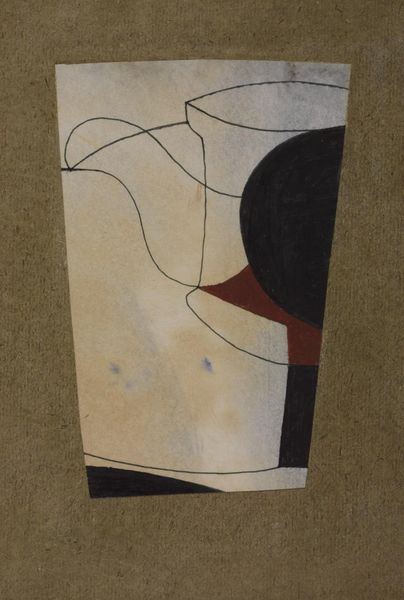
Dimensions: support: 483 x 362 mm
Copyright: © Bowness, Hepworth Estate | CC-BY-NC-ND 4.0 DEED, Photo: Tate
Curator: Dame Barbara Hepworth's "Perigord", held in the Tate Collections, presents us with a network of lines and subtle washes. Editor: It's quietly unsettling. Those bold lines suggest a structure that never quite resolves. It feels incomplete, open to interpretation. Curator: Considering Hepworth's broader engagement with postwar British identity and abstract form, I wonder if this incompleteness mirrors the fractured sense of self experienced during that era. Editor: Perhaps. Or, seen through a material lens, the exposed canvas, the visible pencil strokes… it’s about revealing the labor of creation, stripping away the illusion. Curator: Yes! And the title itself, referencing a region in France, could represent a longing for escape, a different kind of landscape—physical or emotional. Editor: I appreciate the tension between the raw, almost industrial mark-making and the hint of something pastoral. Curator: It's a reminder that even abstraction is deeply rooted in lived experience. Editor: And that materiality often holds those complexities.
Comments
Join the conversation
Join millions of artists and users on Artera today and experience the ultimate creative platform.
tate 7 months ago
⋮
The relationship between this painting and the Périgord, a region of south-west France, is unclear. The image reflects the way Hepworth was influenced by both patterns of natural growth and the loose abstract painting of French Tachisme. While remaining non-representational, the painting may bring to mind the layered structure of a flower as it opens up. Her technique is unusual: black lines seem to have been made with a straw, or a similar tubular device, dipped in paint, while the gesso ground has been scratched with a five-toothed tool. Gallery label, August 2004
